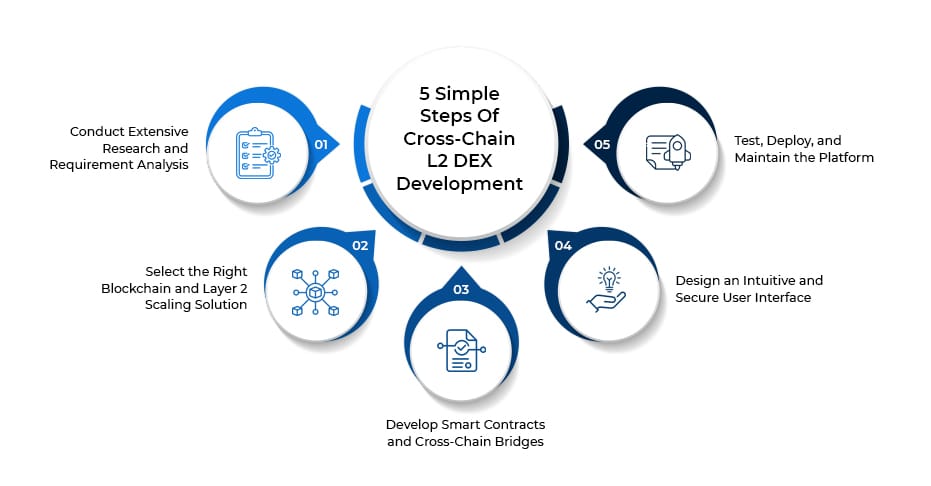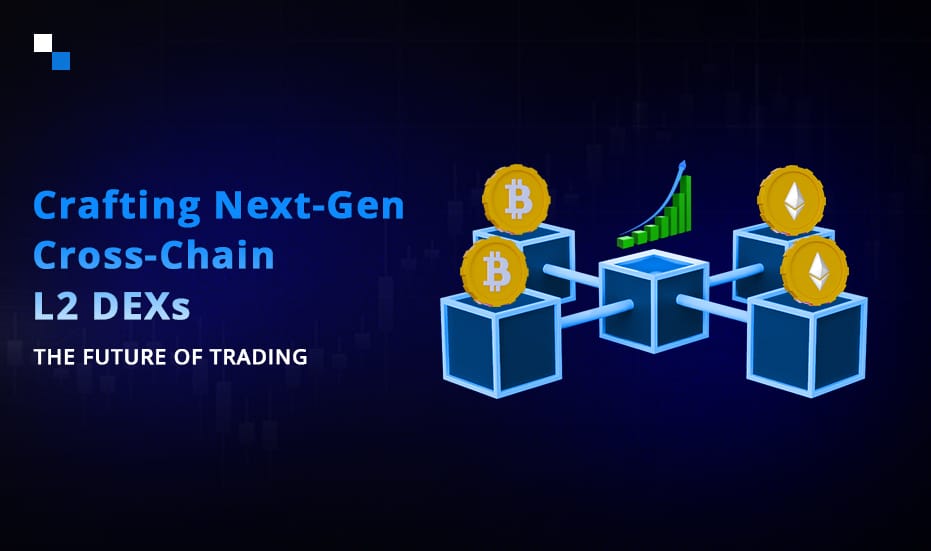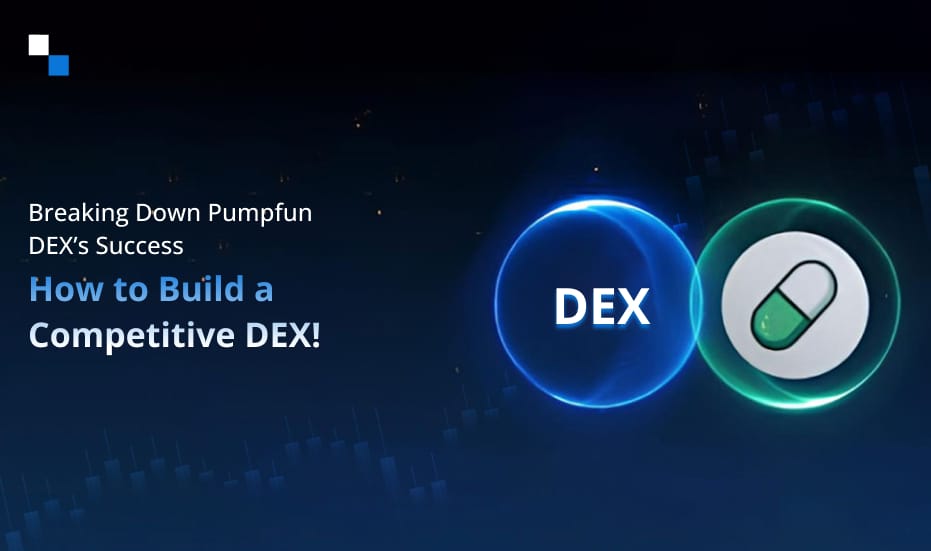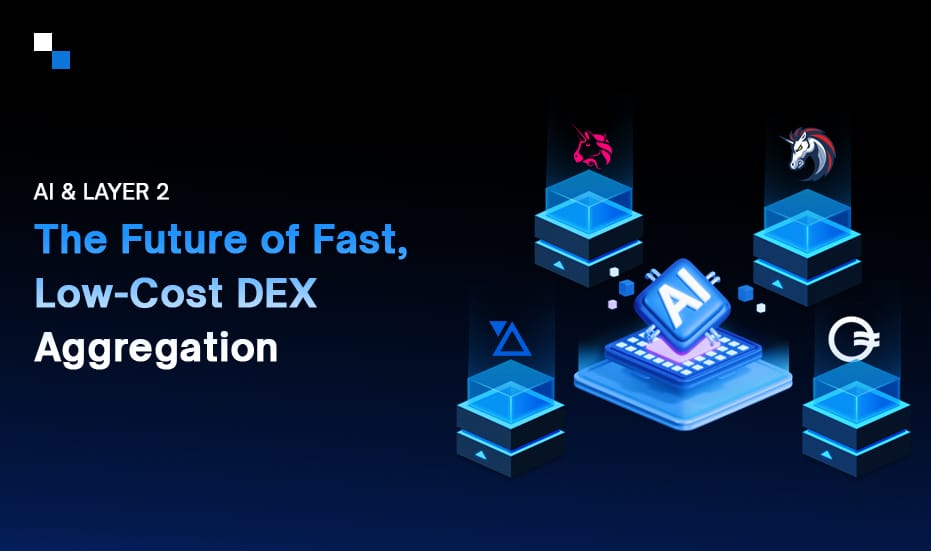
Top 5 Use Cases of Metaverse for Education Industry
January 10, 2025
How to Create a Candy Crush Clone in Just 2 Weeks?
January 13, 2025Imagine a trading ecosystem where scalability meets seamless interoperability—this is the future of decentralized finance powered by Cross-Chain L2 DEXs. The shortcomings of single-chain platforms are being replaced by multi-chain architectures, which offer unparalleled accessibility and efficiency, as the crypto industry develops. Layer-2 solutions such as ZK-rollups and Optimistic rollups are at the forefront, offering ultra-fast transaction speeds, minimal gas fees, and fortified security. An experienced DEX development company, with its cutting-edge blockchain expertise, empowers you to fast-track your journey toward building a next-generation Cross-Chain L2 DEX, unlocking scalability 100X faster.
Understanding Cross-Chain L2 DEXs
The introduction of Cross-Chain Layer 2 DEXs marks a significant advancement in the dynamic field of DeFi in terms of achieving smooth interoperability across blockchain ecosystems. These platforms redefine the boundaries of decentralized trading by enabling users to execute transactions across multiple blockchain layers—be it Layer 2 networks like Optimism and Arbitrum or a blend of Layer 1 and Layer 2 solutions.
Users can trade assets with little hassle and at a lower cost thanks to Cross-Chain L2 DEX platforms, which act as an advanced trading hub where various blockchain environments come together. Unlike conventional DEXs limited to single-chain operations, cross-chain L2 DEXs harness the power of interoperability protocols, such as cross-chain bridges and inter-blockchain communication (IBC), to facilitate asset swaps and liquidity sharing across chains.
The Mechanics Behind Cross-Chain L2 DEXs
Fundamentally, cross-chain L2 DEXs use Layer 2 scaling techniques to increase throughput and reduce transaction costs. Layer 2 chains offload transaction processing from Layer 1 mainnets, enabling lightning-fast confirmations without compromising the security and decentralization of the underlying blockchain. When integrated with cross-chain technology, these platforms establish trustless mechanisms for inter-chain communication, eliminating reliance on centralized intermediaries.
For example, a trader can seamlessly swap tokens between Ethereum Layer 2 and Binance Smart Chain or bridge liquidity from Polygon to an Arbitrum-based protocol—all within the same DEX interface. This unprecedented fluidity fosters a highly interconnected DeFi ecosystem.
Core Advantages of Cross-Chain L2 DEX Development
The advent of cross-chain DEXs marks a transformative phase in DeFi. These innovative platforms integrate cross-chain L2 DEX solutions with Layer 2 scalability to revolutionize blockchain trading. This solution raises the bar for accessibility and efficiency in the DeFi industry by fostering interoperability and bridging ecosystems. Here’s how these platforms redefine decentralized trading:
- Seamless Cross-Chain Asset Interoperability
Cross-chain DEX platforms excel at enabling effortless asset exchanges across Layer 1 and Layer 2 blockchains. This functionality eliminates reliance on centralized intermediaries, boosting market accessibility and liquidity. The integration of cross-chain L2 DEX solutions ensures users can seamlessly interact with diverse blockchain environments like Ethereum, BNB Chain, and Polygon.
- Dramatic Reduction in Transaction Costs
High gas fees on Layer 1 networks often deter users from DeFi trading. Leveraging Layer 2 scalability, cross-chain DEX development services process transactions off-chain while finalizing them on the main net, significantly reducing costs. This efficiency democratizes DeFi, inviting smaller investors into the decentralized ecosystem.
- Unmatched Scalability and Throughput
Cross-chain Layer 2 DEX development guarantees scalability without compromising security by leveraging technologies such as Optimistic rollups and zk-rollups. These platforms handle thousands of transactions per second, resolving bottlenecks common in Layer 1 networks. High throughput empowers decentralized exchange development companies to create platforms that cater to rapidly growing trading demands.
- Enhanced Liquidity Aggregation
Liquidity is the backbone of trading, and cross-chain decentralized exchange platforms aggregate liquidity from various chains. This ensures deeper pools and reduces slippage for traders. By fostering liquidity across underutilized networks, DEX development services create a balanced, efficient DeFi landscape.
- Faster Settlement Times and Instant Finality
Cross-chain L2 DEX platforms accelerate transaction finality through advanced Layer 2 solutions, offering sub-second settlements. Instant finality is vital for high-frequency trading, enabling real-time market responses. These features position DEX development companies at the forefront of decentralized innovation.
- Security Without Compromise
While prioritizing speed and cost-efficiency, cross-chain DEX platforms maintain robust security by integrating Layer 1 cryptographic safeguards with Layer 2 innovations. Multi-signature wallets and smart contract audits further fortify platform integrity, instilling trust in traders.
- Access to Diverse DeFi Products and Opportunities
With cross-chain L2 DEX solutions, traders access a spectrum of DeFi products, from yield farming to derivatives. This one-stop hub for decentralized trading fosters innovation and unlocks new financial possibilities. Decentralized exchange development companies are instrumental in expanding these opportunities.
- Empowering Tokenized Assets and NFTs
Cross-chain decentralized exchanges are pivotal for NFT and tokenized asset markets. By enabling cross-chain trading of these assets, platforms unlock liquidity and foster global participation. Such innovation strengthens the decentralized economy.
- Future-Proofing the DeFi Ecosystem
The adaptability of cross-chain L2 DEX solutions ensures their relevance in a dynamic blockchain landscape. These platforms integrate seamlessly with emerging Layer 1 and Layer 2 technologies, securing their role in the future of DeFi.
The advantages of cross-chain Layer 2 DEX development extend beyond efficiency and accessibility—they define the next era of DeFi. These platforms increase liquidity, lower costs, and break barriers by promoting interoperability and scalability. For businesses seeking innovation, partnering with a leading decentralized exchange development company ensures access to advanced solutions that shape the future of decentralized trading.
Key Features of Cross-Chain L2 DEX Development Solutions
The development of cross-chain L2 DEX solutions incorporates cutting-edge features designed to transform decentralized trading into a seamless and highly scalable experience. These unique and trending features address the growing demand for secure, efficient, and interoperable trading environments in the DeFi sector. Let us scroll down to check the wide range of features that must be included in your cross-chain L2 DEX platforms-
- Interoperable Bridge Protocols- Advanced bridge protocols enable secure asset transfers between multiple blockchain networks, including Layer 1 and Layer 2 chains. These bridges ensure seamless token swaps and liquidity sharing, enhancing the versatility of a cross-chain decentralized exchange.
- Dynamic Fee Adjustment- Integrated mechanisms for real-time fee optimization adjust transaction costs based on network conditions. This ensures affordability for traders while maintaining scalability—a cornerstone of cross-chain L2 DEX development.
- Modular Smart Contract Framework- A modular smart contract architecture enables easy customization of trading features. This allows the DEX development company to implement unique functionalities, such as multi-chain yield farming and custom token standards, without compromising security.
- High-Performance Matching Engines- Cutting-edge matching engines provide high throughput and instant order execution, addressing the latency issues often found in cross-chain dex platforms. This ensures traders experience minimal delays even during volatile market conditions.
- Integrated On-Chain Governance- Advanced governance mechanisms empower users to participate in decision-making processes directly through the DEX. This fosters a democratic ecosystem, aligning with the decentralized ethos of DEX development services.
- Zero-Knowledge Proofs (ZKPs)– ZKPs enhance privacy and security in transactions by allowing data validation without revealing sensitive information. This advanced cryptographic feature ensures that cross-chain decentralized exchanges maintain trustless and tamper-proof environments.
- Comprehensive Liquidity Aggregation- These solutions build deep liquidity pools by drawing on liquidity from several Layer 1 and Layer 2 chains. Enhanced liquidity aggregation ensures minimal slippage and better trade execution, reinforcing the efficiency of cross-chain Layer 2 DEX development.
- Native NFT and Asset Support- Cross-chain L2 DEX platforms now support tokenized assets and NFTs, enabling seamless trading of digital collectibles and real-world assets across chains. This positions them as comprehensive hubs for diverse asset trading.
- Customizable UI- Intuitive and customizable UIs cater to novice and advanced traders. These interfaces are designed to provide smooth navigation while incorporating complex functionalities in a user-friendly manner.
- Enhanced Security Layers- Integrating multi-signature wallets, time-locked transactions, and smart contract audits ensures robust protection against exploits, making these solutions secure for global adoption.
Incorporating these features into decentralized exchange development company projects ensures a future-proof, innovative, and scalable solution that caters to the demands of modern DeFi ecosystems.
What Are The Steps to Develop a Cross-Chain L2 DEX Platform in 2 Weeks?
Cross-chain L2 decentralized exchange development solutions leveraging Layer 2 technology represent a pinnacle of innovation in the DeFi space. Bridging the scalability and interoperability gaps across blockchain ecosystems, these platforms enable seamless and efficient trading experiences. Here, we break down the 5 SIMPLE steps to develop a cross-chain L2 DEX platform, showcasing why this approach is pivotal for DeFi’s growing popularity.

Step 1: Conduct Extensive Market Research and Requirement Analysis
Begin by thoroughly understanding market trends, user requirements, and technological advancements. Analyze the performance of existing cross-chain L2 DEX solutions and identify opportunities to differentiate your platform. This foundational step ensures your cross-chain dex meets user demands and adheres to evolving industry standards. Partnering with an experienced DEX development company can provide valuable insights into this research phase.
Step 2: Select the Right Blockchain and Layer 2 Scaling Solution
Choosing compatible Layer 1 and Layer 2 networks is critical. The blockchain ecosystem should support interoperability while maintaining scalability and security. Layer 2 technologies like zk-Rollups, Optimistic Rollups, or sidechains are ideal for achieving fast, low-cost transactions. Integrating these solutions lays a solid foundation for seamless cross-chain Layer 2 DEX development and ensures optimal trading experiences across networks.
Step 3: Develop Smart Contracts and Cross-Chain Bridges
Cross-chain bridges and strong smart contracts are the foundation of any cross-chain L2 dex. Smart contracts facilitate automated, trustless transactions, while cross-chain bridges enable interoperability between blockchain ecosystems. Collaborate with a decentralized exchange development company to design secure, efficient, and tamper-proof contract architectures. The proper implementation of these components ensures smooth asset exchanges across multiple blockchains.
Step 4: Design an Intuitive and Secure User Interface
A well-designed user interface is essential for user adoption. Focus on creating a simple, intuitive, and secure interface for your cross-chain DEX platform, ensuring it caters to both novice and advanced traders. Include features like multi-chain wallet integration, real-time price feeds, and liquidity management dashboards. Seamless UX/UI design enhances usability and encourages consistent engagement, solidifying your platform’s position in the competitive DeFi landscape.
Step 5: Test, Deploy, and Maintain the Platform
Thorough testing ensures the security and functionality of your cross-chain L2 dex solutions. Simulate various scenarios to identify vulnerabilities, optimize performance, and resolve potential issues before deployment. After launch, provide continuous updates and security patches to adapt to evolving market demands. Reliable DEX development services play a vital role in maintaining your platform’s integrity and performance post-launch.
Developing a cross-chain Layer 2 DEX platform requires a blend of strategic planning, advanced technology, and user-centric design. Following these 5 steps, businesses can establish a robust, scalable, and efficient trading platform, redefining decentralized finance. For tailored solutions, collaborating with a leading DEX development company ensures access to expertise and innovative tools, making the vision of a future-ready DEX a reality.

How Much Does Cross-Chain L2 DEX Development Cost?
The cost of cross-chain Layer 2 DEX development depends on various factors, including the choice of blockchain networks, Layer 2 solutions, and the complexity of features like cross-chain interoperability, smart contract architecture, and liquidity mechanisms. Due to advanced functionalities, custom-built cross-chain decentralized exchange platforms may cost more, while white-label solutions can reduce development time and expenses. Collaborating with a reliable DEX development company ensures cost efficiency while maintaining high security and performance standards. The inclusion of cutting-edge cross-chain dex technologies, integration of bridges, and scalability solutions also impact costs. Businesses must consider the expertise of the decentralized exchange development company they choose to ensure tailored DEX development services that meet specific project requirements while staying within budget.
Build Your Cross-Chain L2 DEX 100X Faster With Antier
Accelerate your DeFi journey with Antier’s cutting-edge DEX development services. Our proficiency in Layer-2 integration, blockchain scalability, and interoperability enables you to develop your platform 100 times more quickly and achieve unmatched trading efficiency. With robust multi-chain capabilities, lightning-speed transactions, and enterprise-grade security, we redefine decentralized trading for the modern era. Trust our seasoned blockchain architects to deliver a future-ready solution tailored to your business needs. Revolutionize your trading ecosystem today—partner with us to shape the future of DeFi innovation with a Cross-Chain L2 DEX designed for performance and scalability.
Contact us today!



